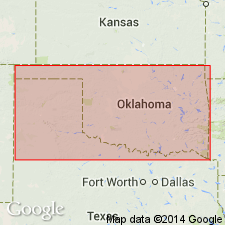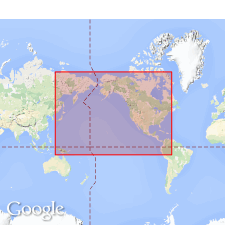
- Usage in publication:
-
- Nelagoney formation*
- Modifications:
-
- Original reference
- Dominant lithology:
-
- Shale
- Sandstone
- Limestone
- AAPG geologic province:
-
- Chautauqua platform
Summary:
Pg. 75. Nelagoney formation. Named by D.W. Ohern, in unpublished ms. Consists of shales and sandy shales interstratified with sandstones and with limestone lentil, 20 feet thick, near middle. Thickness averages 500 to 600 feet in Osage County, central northern Oklahoma. Basal bed is Bigheart sandstone member. Underlies Elgin sandstone and overlies Ochelata formation. [Age is Late Pennsylvanian.]
Type locality: Nelagoney, Osage Co., central northern OK.
Source: US geologic names lexicon (USGS Bull. 896, p. 1474).

- Usage in publication:
-
- Nelagoney Formation†
- Modifications:
-
- Abandoned
- AAPG geologic province:
-
- Chautauqua platform
Summary:
†Nelagoney Formation. The USGS has abandoned term Nelagoney. Members have been reassigned to other formations.
Source: US geologic names lexicon (USGS Bull. 1200, p. 2702).
For more information, please contact Nancy Stamm, Geologic Names Committee Secretary.
Asterisk (*) indicates published by U.S. Geological Survey authors.
"No current usage" (†) implies that a name has been abandoned or has fallen into disuse. Former usage and, if known, replacement name given in parentheses ( ).
Slash (/) indicates name conflicts with nomenclatural guidelines (CSN, 1933; ACSN, 1961, 1970; NACSN, 1983, 2005, 2021). May be explained within brackets ([ ]).

